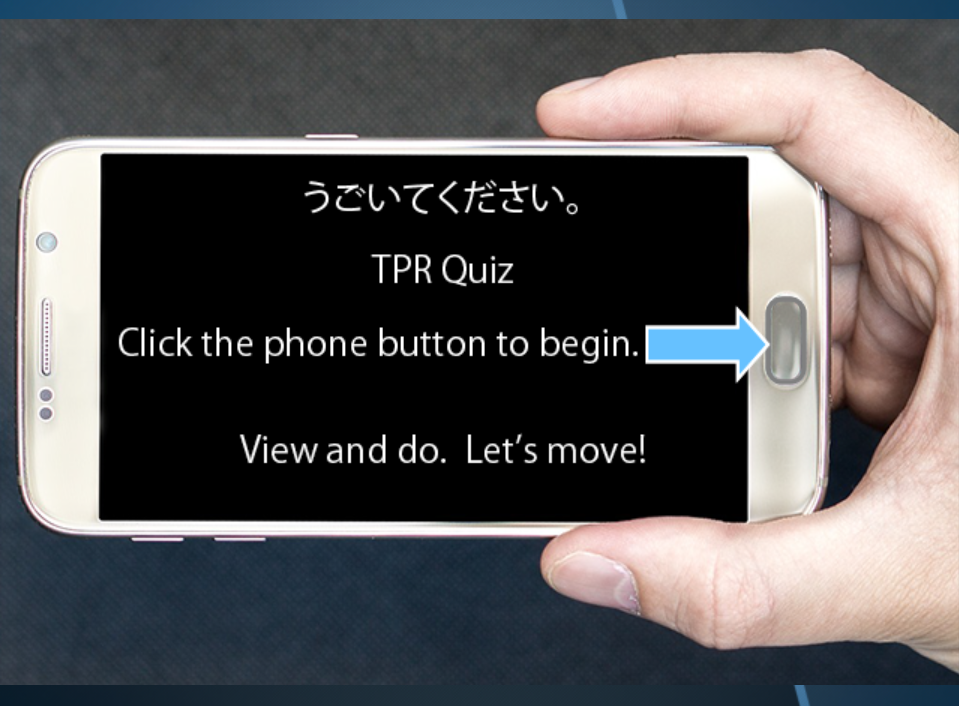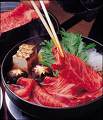You are going to view and listen to a TPR presentation. You should work to repeat each item out loud too for practice in speaking. Science has proven that the more of your senses that you engage in an activity, the more you will learn and the more proficient you will become in reading, listening and speaking. Doing these activities as you are asked to do will help you to internalize the meanings of the words and will also sharpen your listening and speaking skills. These exercises may seem repetitive, but repetition IS the key to fluency!
After you practice with this activity, make sure you complete the TPR Quiz in the Section 1 Assignments folder for this Section.
Click TPR PResentation or click Begin below.
Here is a print version of this actvity. You will still need to use the online version to hear the words.
Practice to become more familiar with the concepts in this unit. Repeat and study this new vocabulary. Click Vocabulary Practice or click Begin below.
Here is a print version of this actvity. You will still need to use the online version to hear the words.
Imagine you are in a Japanese restaurant and you want to order the following food items.
Tell the waiter in a polite way what you want to order. Use Food Item Please or Food Itemをおねがいします(お願いします). Click on each picture to see the correct answer. Note that the word for the process of ordering is ちゅうもんします(注文します)。Note that the word ください(下さい)can also be used to say “please” in asking someone to do something, but it’s typically used with a verb rather than a noun (for example, “Please eat sushi.” would be すしを食べて下さい). Either word for please can be used in polite situations.
Click each picture to see the correct answer.
| てんぷら(天ぷら)をおねがいします。 | |
| おすし(お寿司)をおねがいします。 | |
| まめ(豆)をおねがいします | |
| サンドイッチを おねがいします。 | |
| プリンを おねがいします。 | |
| すきやき(鋤焼き)をおねがいします |
![]() Typical Foods だいひょうてきなたべもの(代表的な食べもの)
Typical Foods だいひょうてきなたべもの(代表的な食べもの)
These are some examples of "typical food” for Japan in general (they are not really just regional specialties).

Sashimi and Sushi
Sushi and sashimi are often thought to be one and the same but they are not really quite the same. Sashimi refers to “raw food” (usually seafood) in thin slices served with spicy Japanese horseradish (wasabi) and shoyu or soy sauce. This will often be served in a bowl of mixed types of raw food. Sushi consists of a variety of foods (some of which are “sashimi” or raw food) served on vinegared rice. Some sushi is sashimi (raw) but some is not. Another form of sushi is norimaki のりまき(海苔巻き)or sushi roll, where the filling of the sushi is rolled in rice with a covering of nori のり(乗り)or dried seaweed papers. Inexpensive “pre-prepared” sushi is available at supermarkets, or at kaiten-zushi かいてんずし(回転寿司)restaurants, where customers sit at a counter and choose what they want from a variety of individual plates of sushi going around in circles on a conveyor belt.
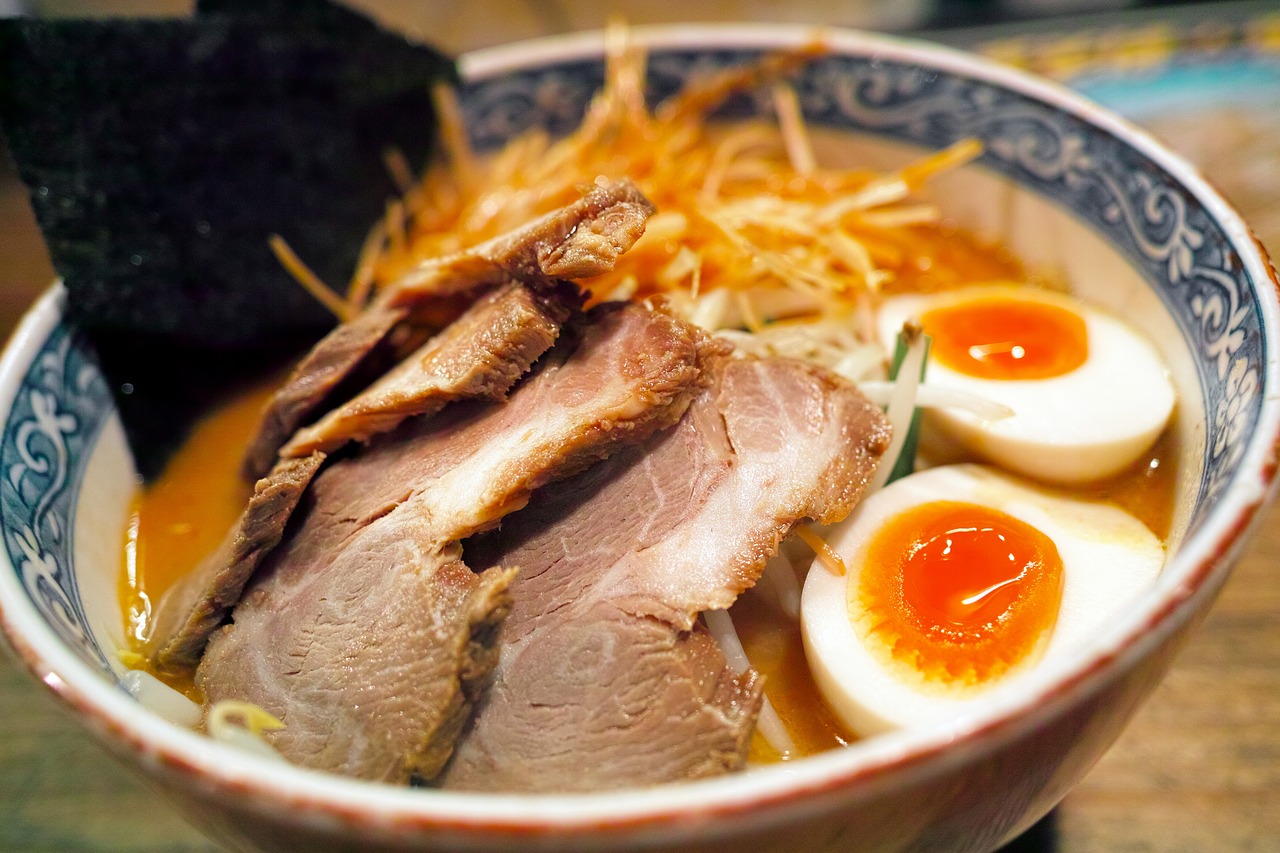 Donburimono
DonburimonoThese types of Japanese dishes consist of a bowl (donburi どんぶりOr 丼) of rice covered with one of a variety of toppings such as boiled beef (gyudon ぎゅどんOr牛どん), chicken and egg (oyakodon おやこどんOr親子丼), deep-fried shrimp (tendonてんどん Or天丼) or deep-fried pork cutlet and egg (katsudonかつどん Or かつ丼). They are often eaten as part of a reasonably priced “lunch set” with miso soup and pickles.

Tempura
Tempura is a Japanese dish that consists of seafood or vegetables dipped in a light batter (often bread crumbs called パンこOr パン粉) and deep-fried. Traditional tempura is served with a light brown dipping sauce and crushed Japanese radish (daikon だいこんOr大根). The word “tempura” comes from the Portuguese word “tempero” (gravy or sauce) and this dish dates from the mid-16th century when Portuguese and Spanish culture was first introduced to Japan. Tempura can be served with a side bowl of rice and soup or on a bowl of rice (tendon てんどんOr 天丼) or noodles (tempura udonうどんOr饂飩、Or tempura sobaそばOr傍).
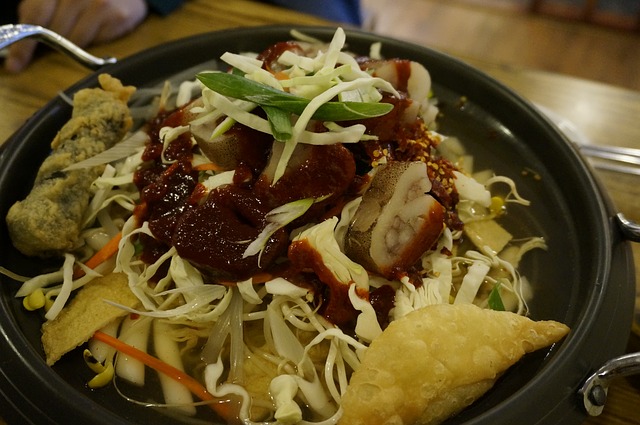
Sukiyaki
Sukiyaki is a savory stew of vegetables and beef cooked in a large pot (nabe なべ 鍋) and dipped in a bowl of beaten raw egg. The vegetables used are usually green onions, shiitake mushrooms and chrysanthemum leaves (shungiku しゅんぎくOr春菊). Also added are tofu and gelatinous noodles (shirataki) and the ingredients are cooked in a sauce made of soy sauce, sugar and sweet cooking sake (mirinみりん 味醂).
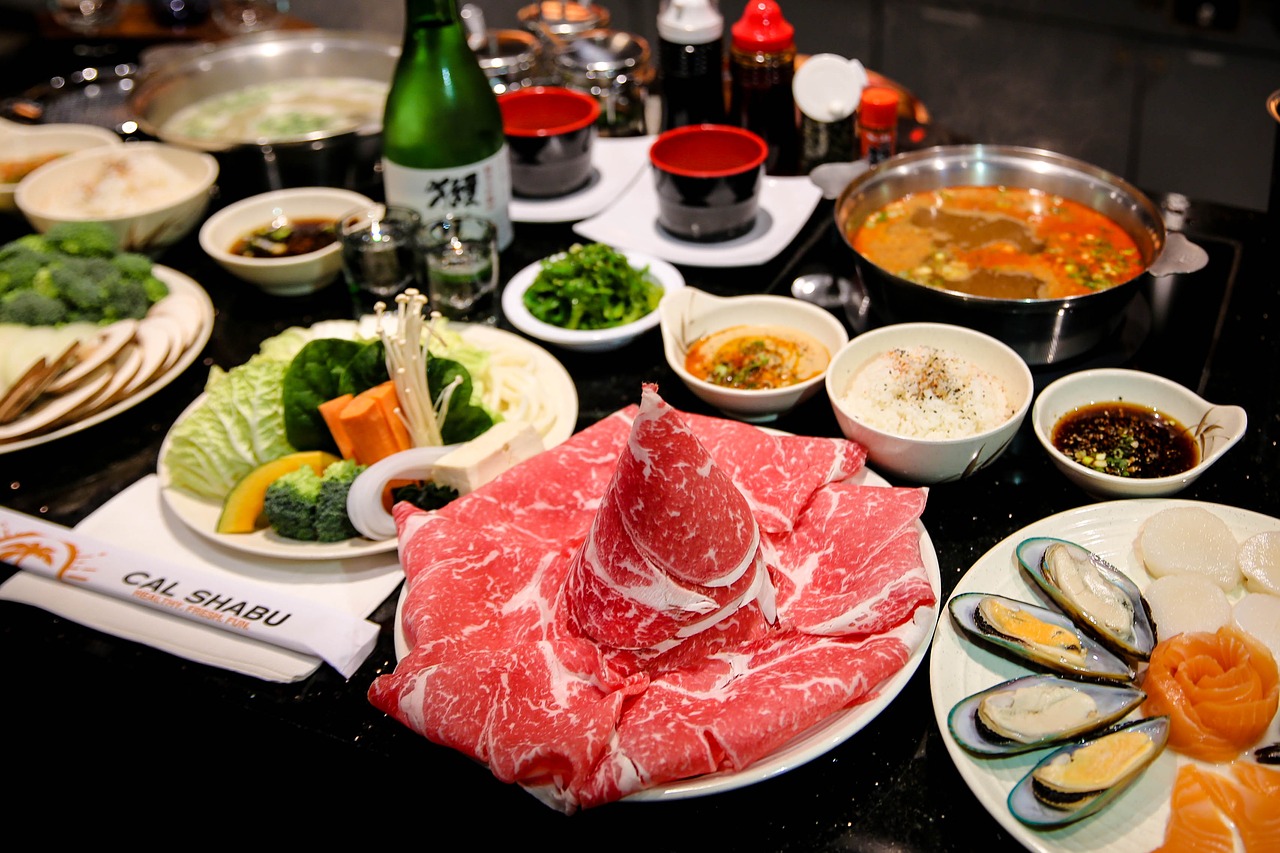
Shabushabu
For this dish diners dip paper-thin slices of beef in a pot of boiling water and stock for a few seconds and then dip the cooked beef in a sesame sauce (goma dare ごまだれ) before eating. Later, vegetables such as enoki (えのき)mushrooms and Chinese cabbage, tofu and shirataki are added. When cooked, these are dipped in a soy and citrus sauce (ponzu ぽんず). After the beef and vegetables are finished, udon can be added to the pot and eaten with the broth. Other flavorings used include crushed garlic, chives and daikon. Economical all-you-can-eat meals are common in Shabushabu restaurants.
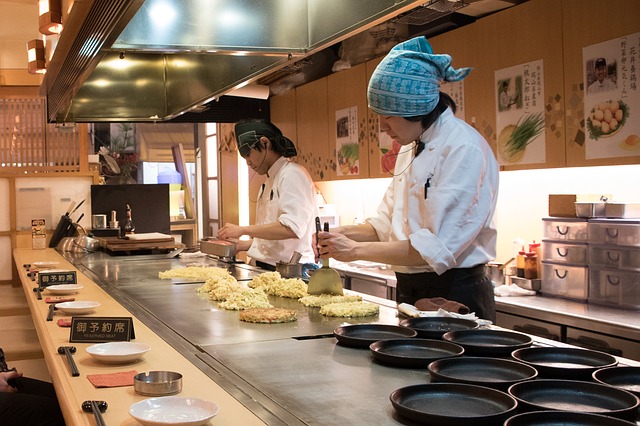
Okonomiyaki
Okonomiyaki can best be described as a savory Japanese pancake. Chopped vegetables and meat or seafood are mixed with batter and cooked on a griddle. Like a pancake, the okonomiyaki is flipped over and cooked on both sides. It is then topped with a special sauce and mayonnaise and sprinkled with dried seaweed papers (nori のり) and dried fish flakes (katsuobushiかつおぶし). Variations include adding a fried egg or soba.
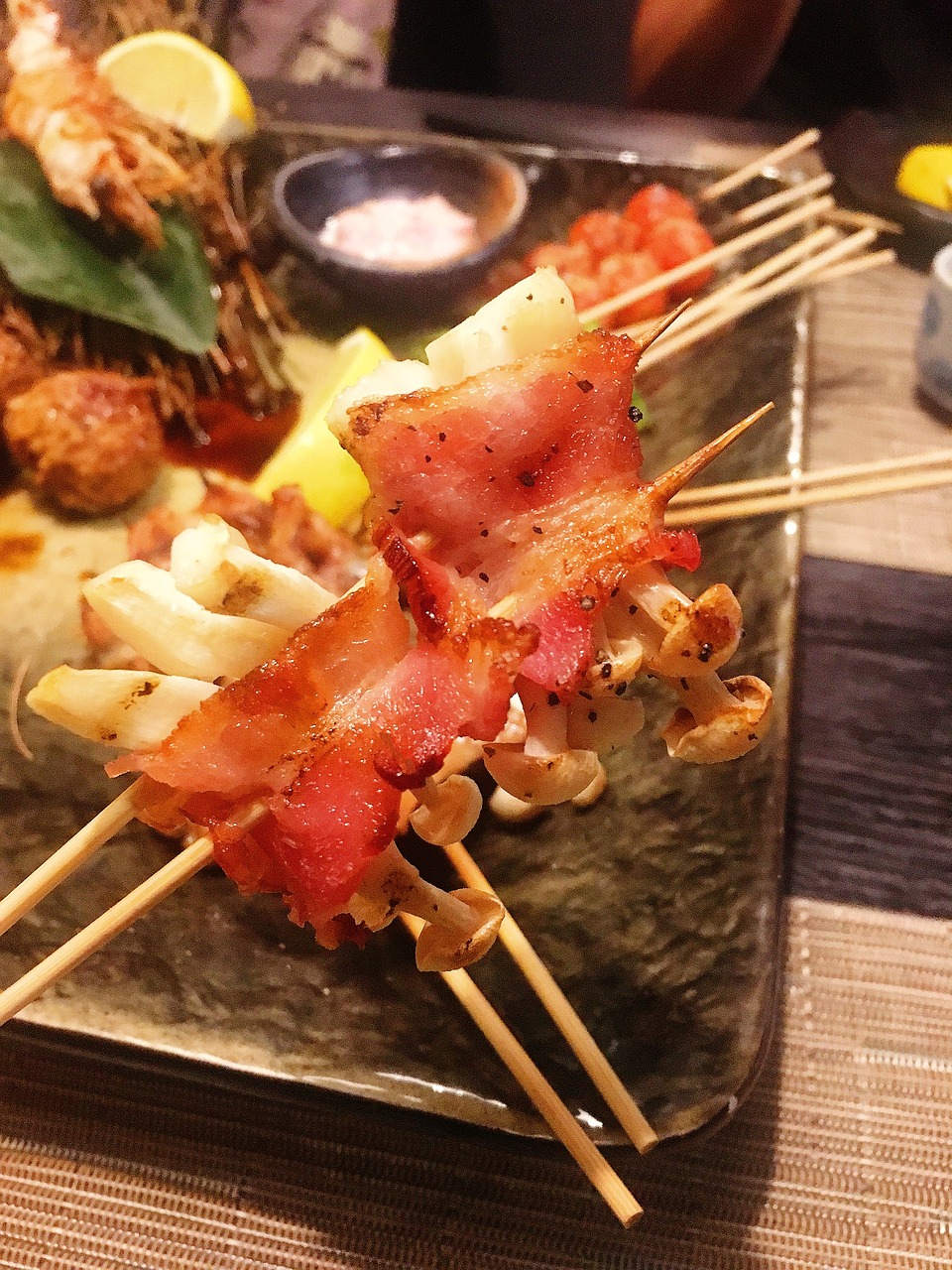
Yakitori
Yakitori itself means grilled chicken. Various cuts of chicken, including the heart, liver and cartilage are cooked on skewers over a charcoal grill. Also cooked this way at yakitori restaurants (yakitoriya 焼き鳥屋) are an assortment of vegetables such as green peppers (piimanピーマン), garlic cloves (ninnikuにんにく大蒜) and green onions (negiねぎ 葱). They are flavored using either a tangy sauce (tare タレ) or salt (shio しお 塩). The menu will usually contain a variety of other foods as well. Yakitoriya are usually laid-back places where the food is a snack to accompany drinking, and this dish is often found at festivals as well.
![]() Frequency Review (Frequency Adverbs)
Frequency Review (Frequency Adverbs)
Use the following activity to review “FREQUENCY” words (words and adverbs that tell “how often” something is done).
You will review how to talk about HOW FREQUENTLY or HOW MUCH we do some of the activities we're talking about in this section. Look at the pictures below and then say how frequently you do that activity using the following choices (there are others possible but use these in this unit):
- Positive Frequency Words: よく (often), いつも (always)、ときどき (sometimes)、たまに (once in a while)
- Negative Frequency Words: あまり (not very much/often…) andぜんぜん (not at all/never).
NOTE: あまりand ぜんぜんare used with negative predicates (Verbs or adjectives).
When you are done, click on each image to see a possible response.
 |
どうぶつえんに、よくいきます。(動物園に よく 行きます。) |
 |
サーカスに たまに いきます。(サーカスに たまに 行きます。) |
 |
ときどき、メキシコりょうりのみせに いきます。〔時々、メキシコ料理の店に いきます。〕 |
 |
あまり えんげきを みません。(あまり、演劇を 見ません。) |
 |
ぜんぜん、オペラを みません。〔全然、オペラを 見ません。〕 |
![]() Graded Assignments
Graded Assignments
Please return to the Section 1 Tasks & Assignments folder to complete the graded assignments for Section1, Part C.


